Design and remodeling pros share the elements they use to boost a shower’s functionality, versatility and style

“Handheld sprayers are versatile enough to be utilized as the primary shower head or as an additional feature in larger showers,” Caporaso says.
A shower niche makes storing bath products in an easy-to-reach location a breeze. “Although shower niches have been around for quite some time, they are a complete necessity in our minds,” says designer Lisa Janzen of KC Interior Design. “When possible, we try to tuck them away so you don’t see all your random shampoo and soap containers.”
Remodeler Damon Fowler of Trends KBS suggests making a shower niche as large as possible for maximum impact. “A lot of times a niche is only as wide as the space between two studs,” he says. “An infinity niche, when possible, will go wall to wall and offer a ton of space for products.”
The Houzz Pro 3D Floor Planner now includes bathroom product and customization options to help you create detailed 3D and 2D bathroom floor plans. Pros can tap into a wide selection of products — vanities, showers, sinks, bathtubs, hardware and tile — to include in bathroom designs. Pros can also adjust the sizes, colors and finishes of bath products to help clients understand their vision.
For an existing shower that doesn’t have a shower niche, adding a shower shelf is a budget-friendly option that will look better than a wire basket over a shower head or a storage basket on a shower floor.
“Instead of adding a built-in niche, simply add a mounted shelf that matches the plumbing,” says kitchen designer Melinda Cabanilla of Flat Pack Kitchen Design. “It saves on labor and tile costs and still makes a big impact.”
Many design and remodeling pros are creating bathrooms with aging-in-place considerations in mind. As a result, shower benches are a feature that many pros recommend.
Designer Dee Dee Lear of Delaney’s Design says adding a bench to most showers has become standard practice for her. “Our clients’ lifestyles are such that they plan to live in their home for many years; therefore I design spaces that adapt and function to the various stages and phases of life,” she says.
For showers that are on the smaller side, designer Stephanie Frees of Plain & Posh likes to add a floating shower bench. “When working on a shower that isn’t overly large, I like having the shower bench float,” she says. “That way you get more floor space to stand and your toes aren’t hitting the front edge of the bench.”
“Foot ledges are a great option for functionality and safety when shaving in the shower,” says bathroom remodeler Carly Gockeler of KraftMaster Renovations. “They take up minimal space and use corners wisely. They allow for the user to rest their foot on the ledge to help them balance while shaving, reducing the potential for falls and slips.”
Another shower feature ideal for aging-in-place design is a linear drain. “By using a linear drain we can avoid a shower curb, making it easy for folks to walk straight into a shower without obstruction,” says designer Jeanine Boyle of JB Interior Design. “It’s perfect for those who are aging in place or thinking about that in the future. It’s also a cleaner look.”
“When using a linear drain, we can use a bigger tile for the shower pan,” Oron says. “This means that we can use the same tile we are using for the bathroom floor inside the shower. Doing this makes the room look more uniform and cohesive.”
For homeowners looking for a luxurious, spa-like experience, adding a steam shower can boost a shower’s appeal and potentially add some health benefits.
“I am specifying a lot of steam showers for my clients lately,” designer Wendy Glaister says. “They help reduce stress, lower blood pressure, help with allergy relief and improve sleep.”
While many of the features pros recommend improve the function of a shower, making it look great is also a top objective. Covering shower walls and floors in statement-making tile is a great way to enhance the appearance of a shower.
“Consider using statement tile to follow the angles and architecture of a shower,” says designer Kelsey Haywood of Haywoodmade Interiors. “Don’t be afraid to make it a focal point. Play with large- and small-scale tile in the same colorway and things will always work well together.”


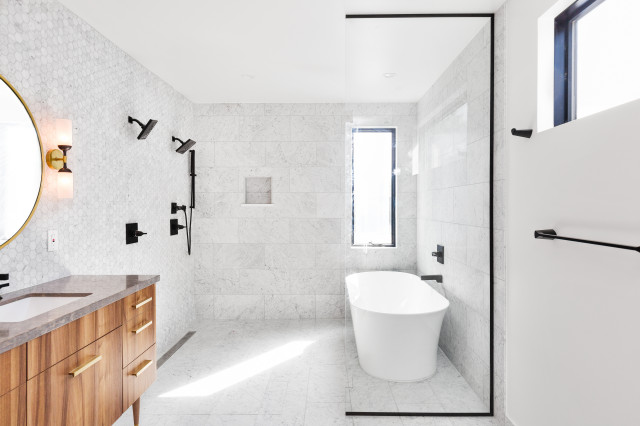



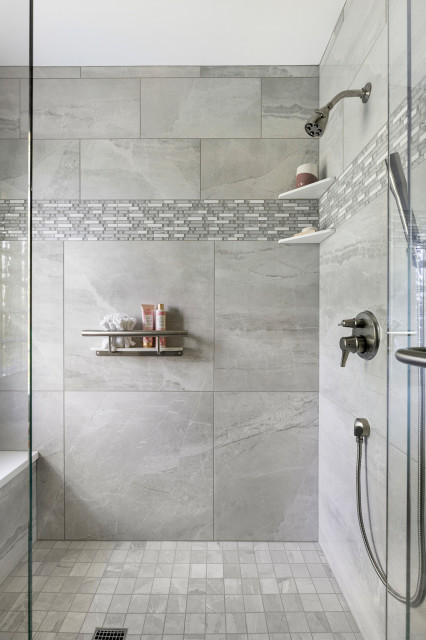


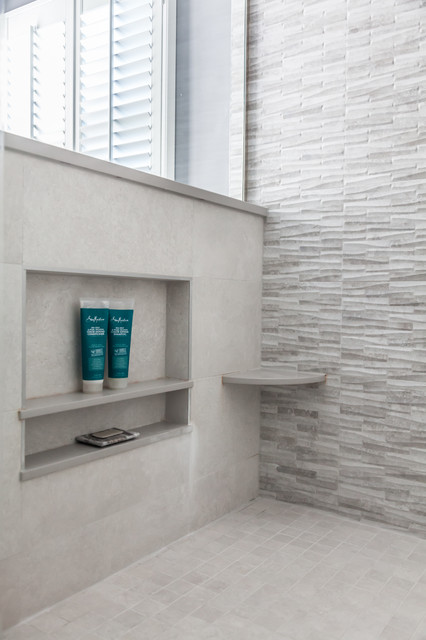

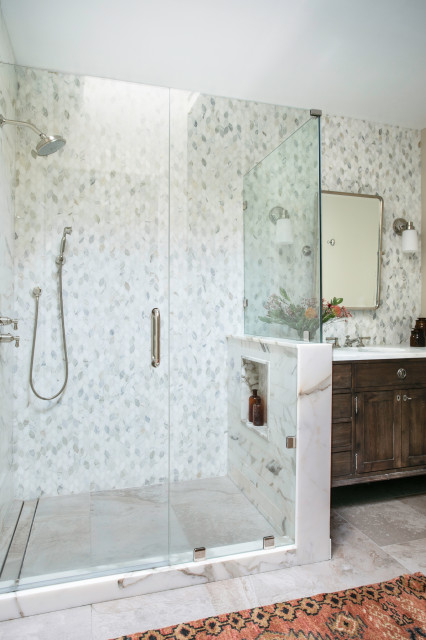



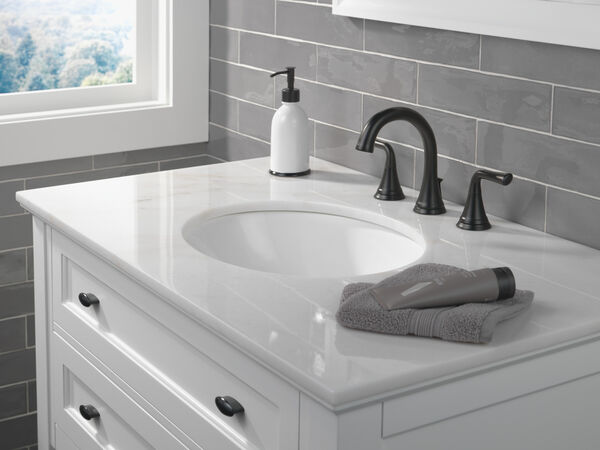
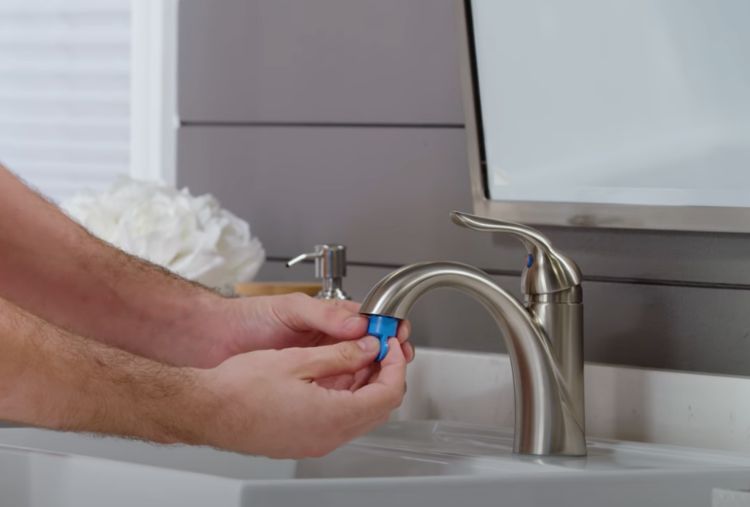
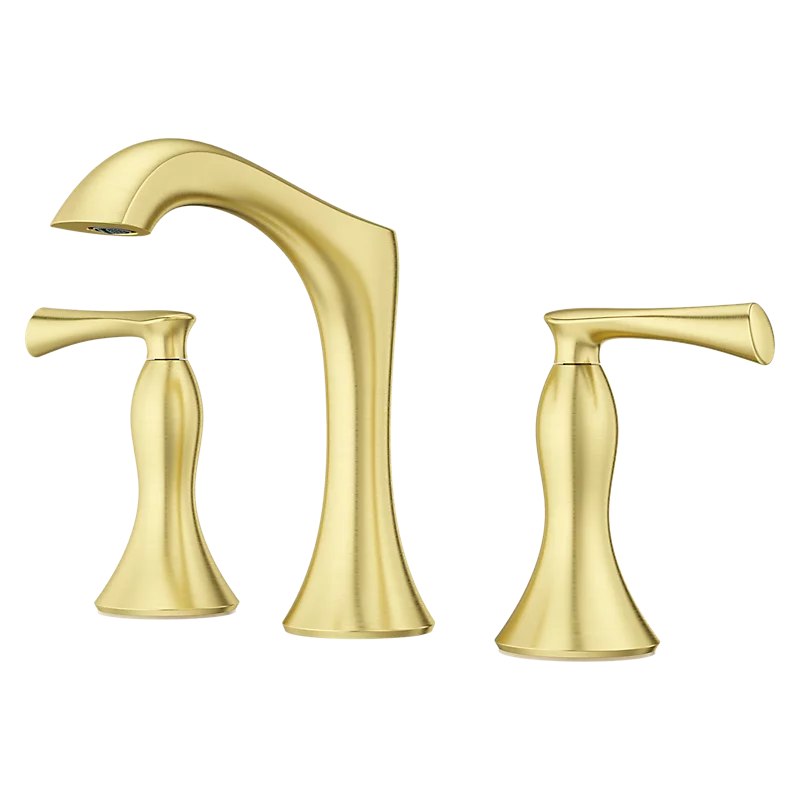
The most recommended shower feature by design and remodeling pros is a handheld shower head. “Our interior design team always recommends a combination of a shower head and a handheld sprayer in all showers,” says architect and designer Eugene Sakai of Studio S Squared Architecture. “We suggest this not only for usual bathing purposes but for the ease of cleaning. It’s far easier to clean your shower with a handheld.”
Bathroom designer Leah Dunne of Kate Roos Design says the versatility of a hand shower is hard to beat. “Besides the obvious ease of use for rinsing off in the shower, it’s also great for cleaning pets, kids or the shower itself,” she says. “It’s a useful feature that enhances the function of any type of shower, from a simple shower-tub combo to a large spa-style shower.”